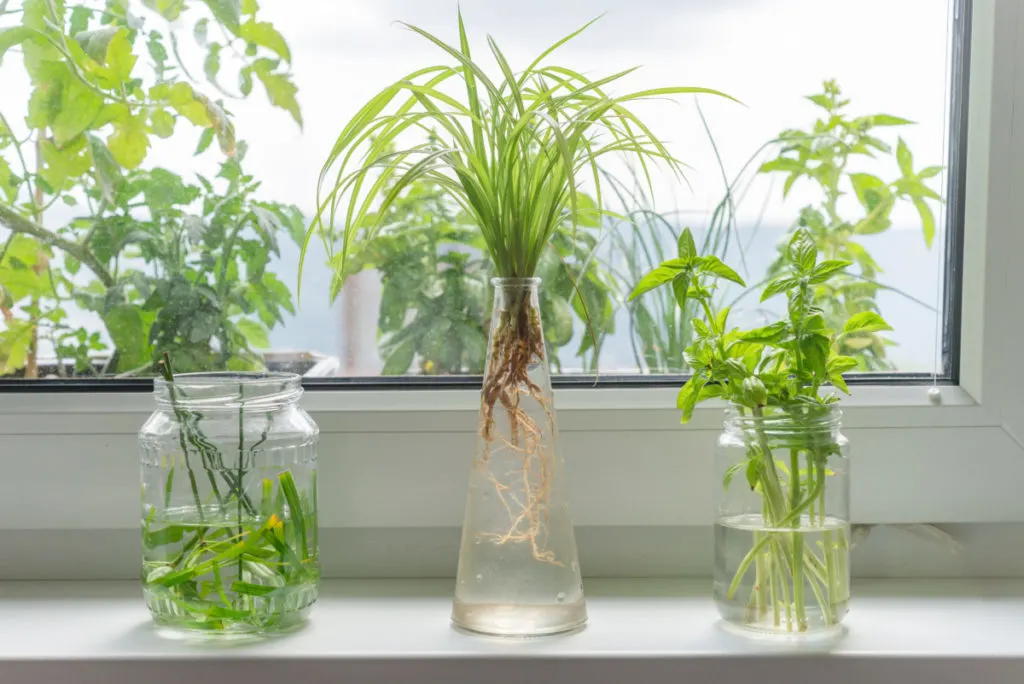
Learning how to propagate your plants is easily one of the most rewarding (and cheap!) ways to multiply your collection.
Dividing, grafting, layering, and cutting are among the horticultural skills we can use to propagate plants asexually.
The new plant, technically a clone, will grow to be identical to the parent specimen.
These techniques involve taking a part from an established plant – the roots, stems, branches, or leaves – and providing the right conditions for it to put out fresh roots and regrow.
Applying rooting hormones to the cut portion of the plant will speed up the time for roots to emerge, often stimulate more roots to form, and can drastically increase the success rates for difficult-to-root species.
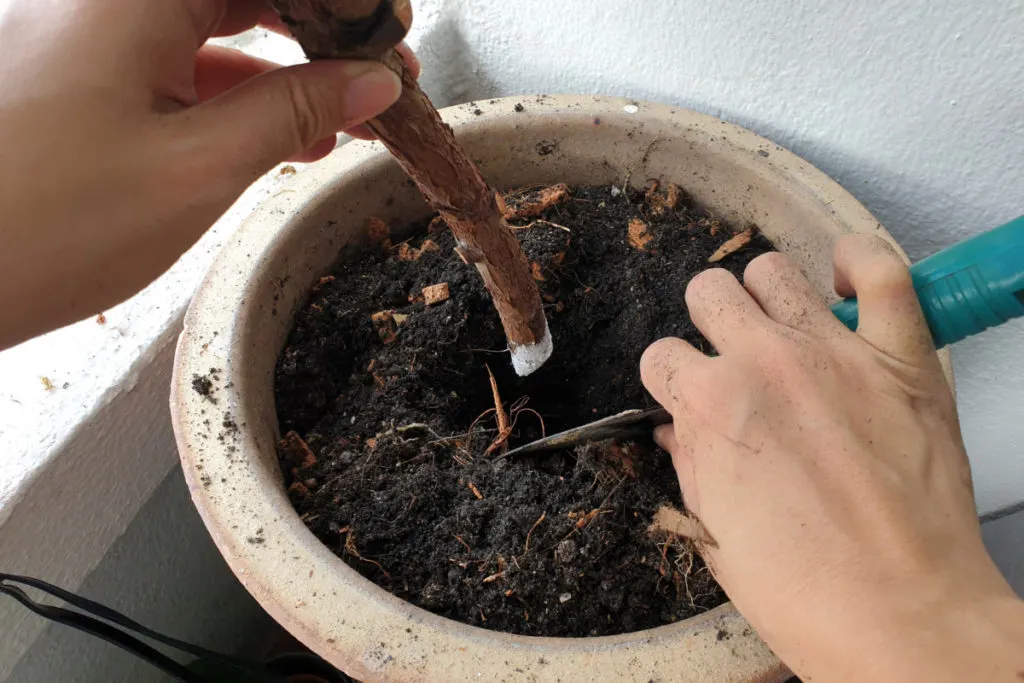
What are Rooting Hormones?
Plants require plant hormones throughout their lifecycle.
In order to sprout, increase in size, bear flowers, form fruit, and produce seeds, plants rely on hormones to signal each stage of growth and development.
Auxins are a class of phytohormones that are responsible for several aspects of plant growth, including the growth of roots.
Found in the stems, root tips, and buds, auxins are present in all plants in varying concentrations.
These dynamic chemicals will move around the plant in response to environmental conditions.
For example, higher concentrations of auxins in the root system will boost roots and hinder the growth of shoots; when they are more abundant in the foliage, auxins will increase cell elongation to produce larger leaves and taller plants.
There are two naturally occurring auxins plants use to initiate rooting: Indole-3-acetic acid (IAA) and Indole-3-butyric acid (IBA).
IBA is most commonly used in commercial rooting products because IAA isn’t very stable and quickly degrades when exposed to light.
Though IBA is a naturally produced chemical, rooting powders, gels, liquids, and compounds sold today are made from a synthetic form of IBA.
Are Rooting Hormones Absolutely Necessary?
No, not exactly.
Plants produce their own rooting hormones or else there wouldn’t be roots – like, at all.
Generally speaking, the higher the auxins produced in the plant species, the more easily it will set roots.
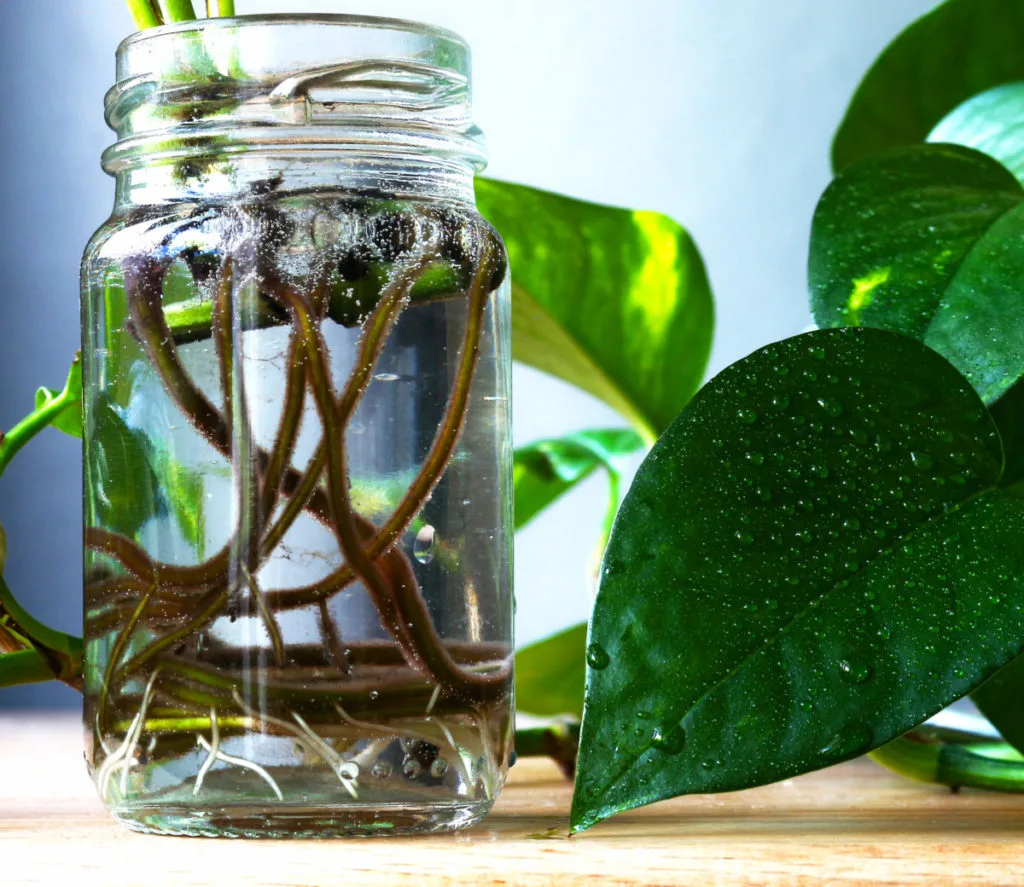
Trailing houseplants, like pothos, philodendron, and tradescantia are so easy to root in water that adding rooting hormones would surely be overkill.
Lots of herbs will also readily take root in soil or water. Succulents are very easy to propagate by leaf, stem or branch cutting too.
Things get trickier when trying to reproduce woody species.
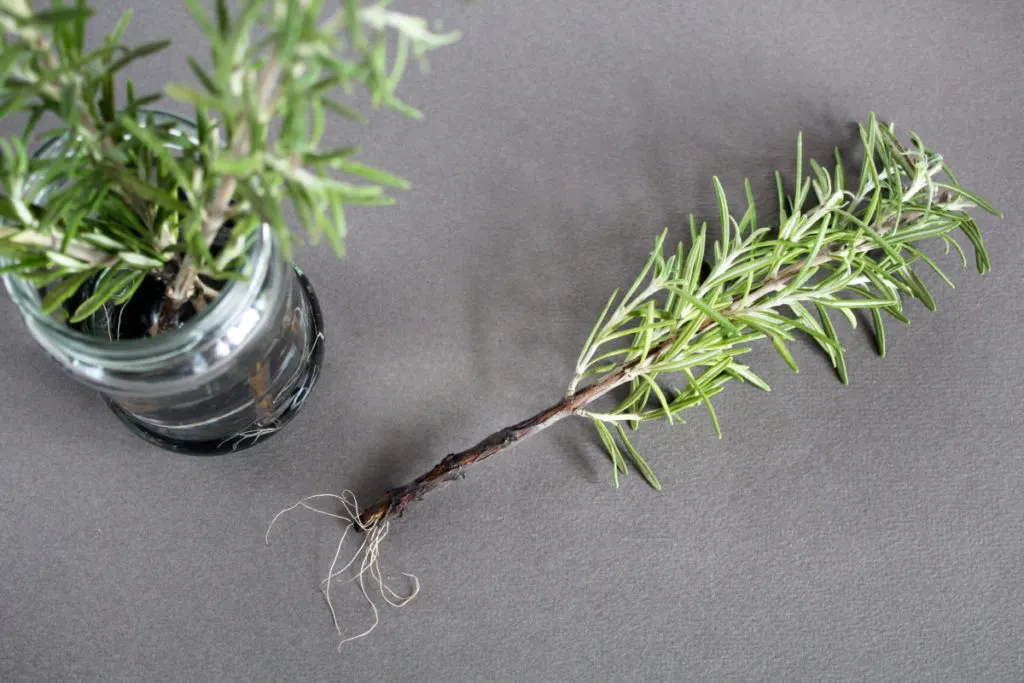
Several types of shrubs and trees will set out roots without the help of additives, but some species are much more difficult to get to root. These include azalea, birch, hibiscus, holly, juniper, maple, oak, pine, hydrangea, and bougainvillea, among other woody-stemmed plants.
What often happens with hard-to-propagate plants is the cutting will rot before it has a chance to form roots.
Because rooting hormones speed up the time for roots to emerge, allowing the plant to take up water instead of sitting in it, the chances of success are vastly improved.
Even with the assistance of rooting hormones, plant cuttings need a good growing environment to prevent rot. Providing them with the right amount of sunlight, humidity, moisture and airflow is just as important for successful propagation.
Some species will live or die by the time of year cuttings are taken as well so it’s smart to do your research on the cultivar you’re trying to propagate before hacking away at the parent plant.
5 Natural Rooting Compounds
Rooting compounds are certainly a useful thing to have around the home propagation station.
As an organic alternative, natural rooting hormones can be extracted from specific plant species that are rich sources of IAA and IBA.
Other natural rooting aids – like cinnamon or apple cider vinegar – don’t contain auxins but may provide antimicrobial protection while the stem cutting sets roots.
Here are five natural rooting aids that are cost-effective, sustainable, safe to use on plants, and have held up under scientific scrutiny:
1. Willow Water
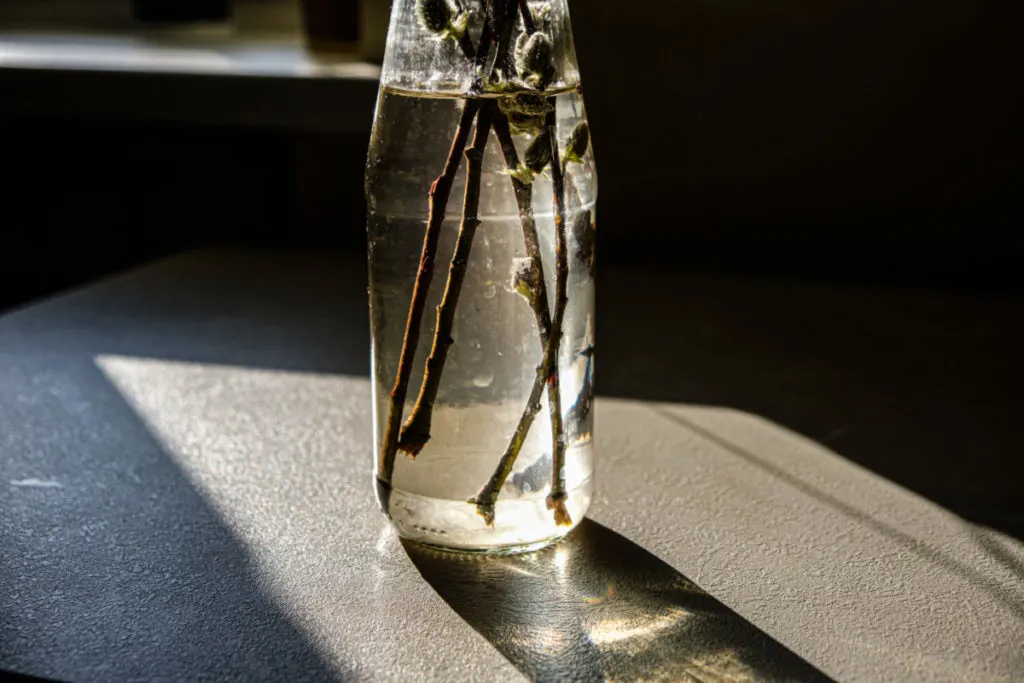
Willow (Salix spp.) tops the list as one of the easiest plants to root. Take a branch cutting, stick it in moist soil and it will most certainly regrow.
This is because Salix trees and shrubs – including weeping willow, pussy willow, sallow, and osier – are naturally rich in auxins.
In addition to its IAA and IBA content, willow also contains another plant hormone: salicylic acid.
Dubbed nature’s aspirin for its pain-relieving properties, salicylic acid is also antimicrobial and can help hinder fungi and bacteria from attacking the cutting before roots get a chance to form.
Willow water has been used as a natural rooting hormone for centuries.
It’s made by steeping young, freshly cut willow twigs in plain water for 24 to 72 hours. Keep the container in a dark, cool spot while you await the brew. Filter out the willow stems and plan to use it right away on your cuttings.
Cuttings can be rooted directly in the willow water. Or, let the cutting soak in willow water for up to 48 hours before planting them in soil.
Willow water is considered to be most effective as a rooting hormone on easy-to-root and moderately difficult-to-root plants.
It will rarely work on the hardest to root cultivars, though. This is because both IAA and IBA aren’t very soluble in water.
Although these rooting hormones will indeed leach out into the willow water, the solution will be fairly weak compared with the concentrations available in commercial products.
In an experiment on olive tree cuttings, willow extracts did help promote rooting and root length but using a commercial rooting product had a significantly higher rooting percentage overall.
2. Raw Honey
Honey is an incredibly complex substance composed of sugars, enzymes, amino acids, organic acids, vitamins, minerals, and antioxidants.
Not only is the delicious, gooey, sweet stuff an excellent high-energy food, honey has plenty of therapeutic properties too. It’s long been a folk treatment for soothing coughs and sore throats, healing burns and skin ailments, and easing inflammation.
Honey’s effectiveness as a medicine is thanks to its strong antimicrobial activity. It’s impossible for most bacteria and fungi to grow in it because honey is loaded with sugars, has low moisture content, is highly acidic, and contains hydrogen peroxide.
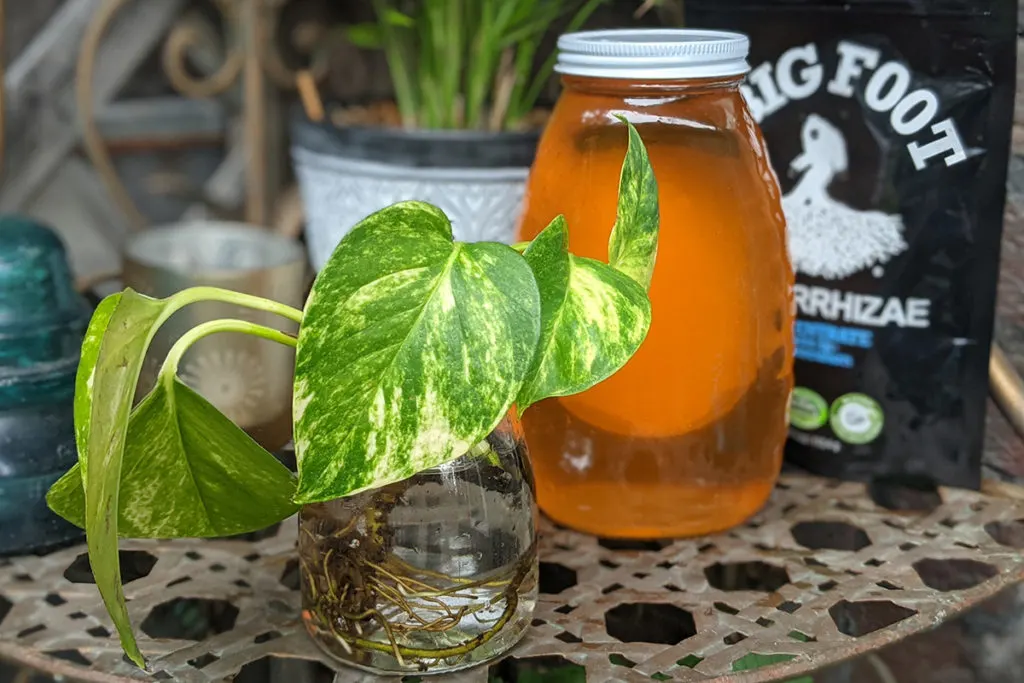
These same qualities are why honey never spoils.
Honey is often touted as a natural rooting hormone as well.
Though honey doesn’t contain any root-stimulating auxins per se, the idea is that it will help protect the cutting from pathogens as it develops roots.
This will give the cutting more time to produce its own rooting hormones before rot sets in.
And it’s easy as pie to add to your regular propagation routine. Simply dip the stem cutting in raw honey before sticking it in the potting soil.
Raw honey as a rooting aid is often better than nothing at all. But it may not be as effective for woody-stemmed plants.
In one study, raw and unpasteurized honey produced faster and more numerous root development on a range of plants and performed much better than regular store-bought honey or plain water.
But in other research, the results were less clear. Raw honey produced more rooting in peanut plants (92%) than rooting hormone (78%) and no treatment (40%). However, when propagating harder-to-root tropical hibiscus, rooting hormone did best (44%) while honey had a small beneficial effect (18%) over the control group (11%).
3. Aloe Vera Gel
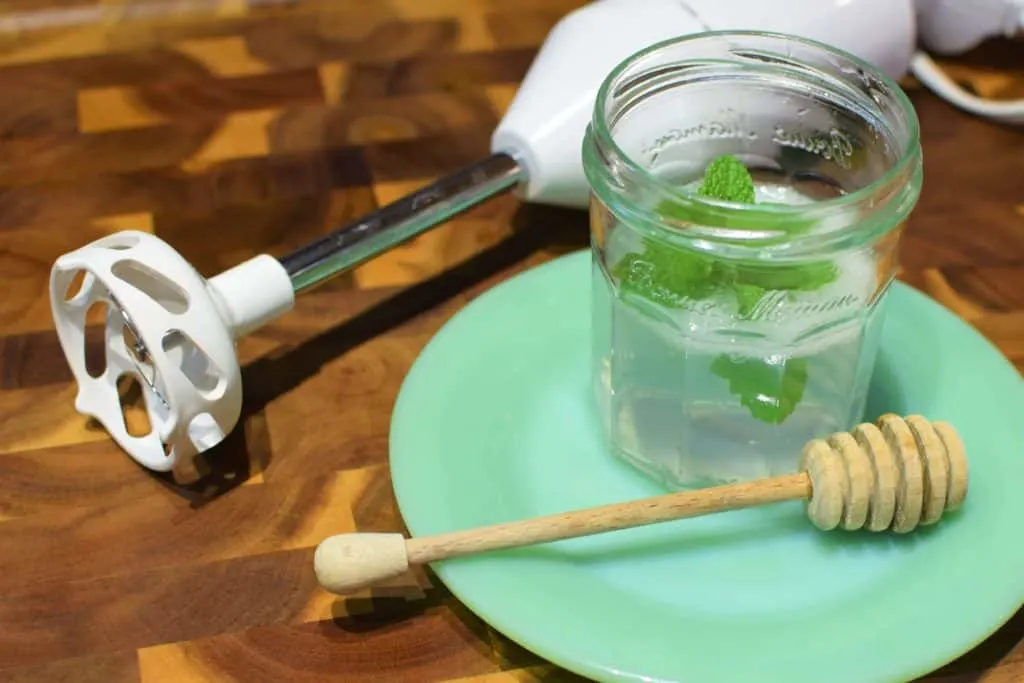
Aloe vera is a spiky succulent with some amazing healing powers.
Those fleshy and serrated leaves house a wealth of vitamins, minerals, amino acids, enzymes, sugars, lignins, and salicylic acids – and these are what gives aloe vera gel its medicinal qualities.
Harvesting aloe vera gel is super easy. Read up everything you need to know about extracting and using aloe vera gel here.
A perhaps lesser-known power of aloe vera gel is its action as a rooting compound. In addition to the 75 constituents of aloe, it’s also a rich source of plant growth hormones.
Put to the test, aloe vera gel performs fairly well for stimulating rooting, even in harder to root plants.
A study published in 2017 found that aloe vera gel was effective as a rooting hormone in aspen trees. Compared with the cuttings that received no treatment, aloe vera gel significantly increased the number and length of roots.
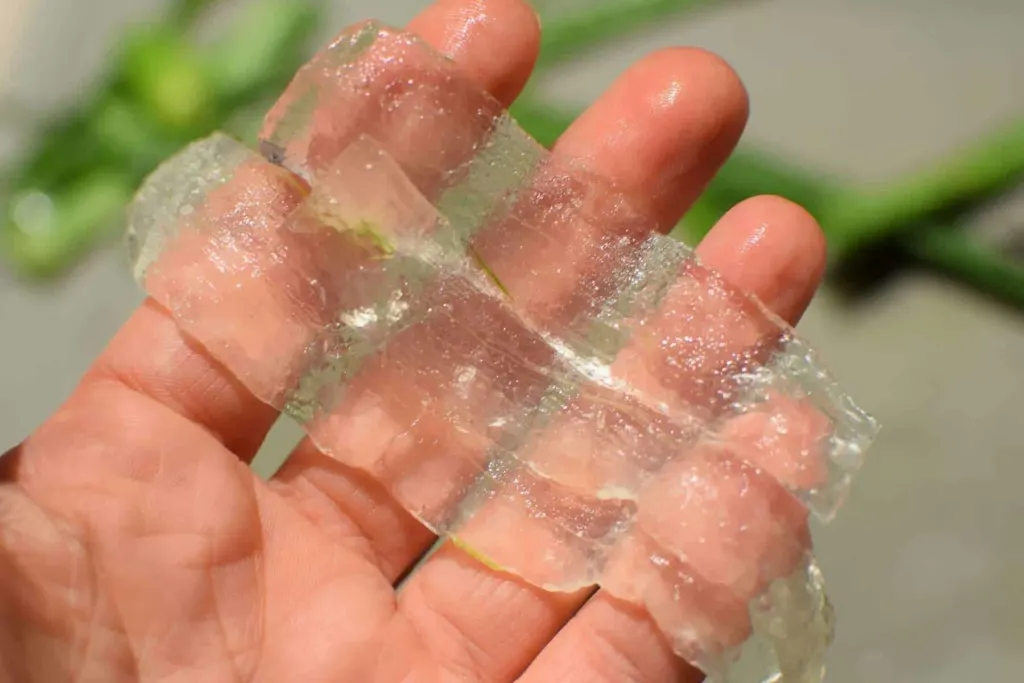
Not only that, but aloe vera gel also had a positive impact on overall plant size and leafy growth.
In other research, aloe vera gel exhibited a similar rooting efficiency as synthetic hormones in the case of grapevine cuttings. Although both synthetic IBA and aloe vera gel produced a good amount of roots, the aloe treatment resulted in comparatively longer roots and more vigorous vine growth.
These studies support the notion that aloe vera gel is an excellent, all-around plant growth booster that will give plant cuttings a good head start in life.
To see for yourself, dip your cuttings in aloe vera gel before nestling them into potting soil.
4. Coconut Water
Nourishing and refreshing, coconut water is the sweet and nutty liquid contained within the inner cavity of hard-shelled coconuts. Made up of 95% water, the juice is low in calories and sugar but holds pretty much every vitamin and mineral in small amounts.
Coconut drupes are one of the largest seeds in the world. In the natural order of things, mature coconuts would drop from palm trees and, given enough time, a little coconut seedling would emerge from the shell.
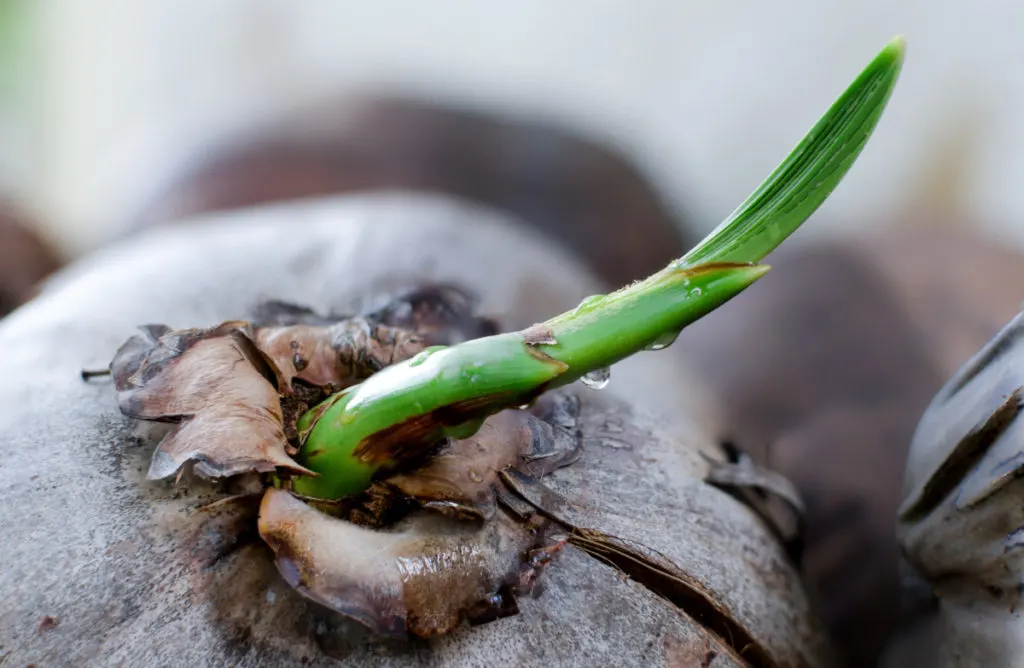
Unlike most other seeds that need to land in an ideal spot with good soil, light, and moisture to have any shot of survival, coconut palms grow on sandy beaches and must be more self-sufficient.
The inner cavity of coconut fruits contains everything the seed embryo needs to get a start in life. Both the liquid coconut water and the meaty white flesh allow the coconut sprouts to develop regardless of what’s going on in the surrounding environment.
Coconut water is plentiful in auxins and other plant growth hormones and is quite effective as a natural rooting aid.
A study from 2015 on mangrove tree propagation found that there was no significant difference between coconut water and commercial rooting hormones. Both treatments produced practically the same amount of rooting and root length.
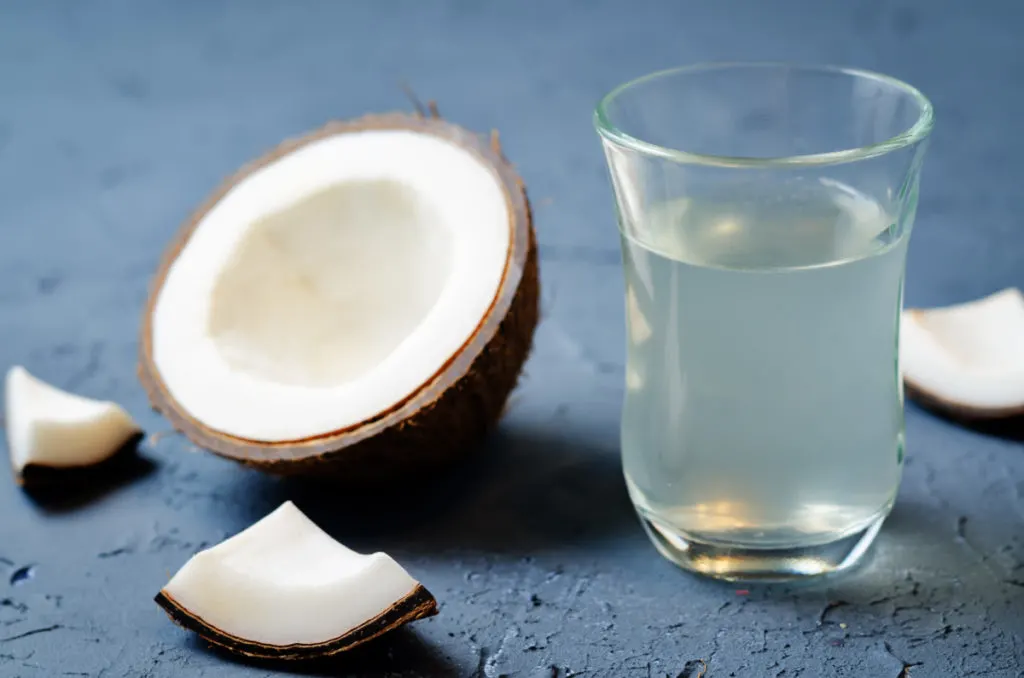
Tropical houseplants in the Dracaena family can be difficult to root from stem cuttings since the canes tend to rot before setting roots. And yet in a 2009 study, Dracaena purple-compacta rooted marginally better in coconut water than commercial products.
The cane cuttings that received coconut water treatment resulted in a slightly higher number of roots, shoots, and leaves.
To use coconut water as a rooting hormone, it’s best to extract it fresh from mature coconuts. Place your stem cuttings in the juice and let them soak for 4 to 6 hours before planting them up.
5. Vermicompost Tea
Plants aren’t the only natural source of rooting hormones.
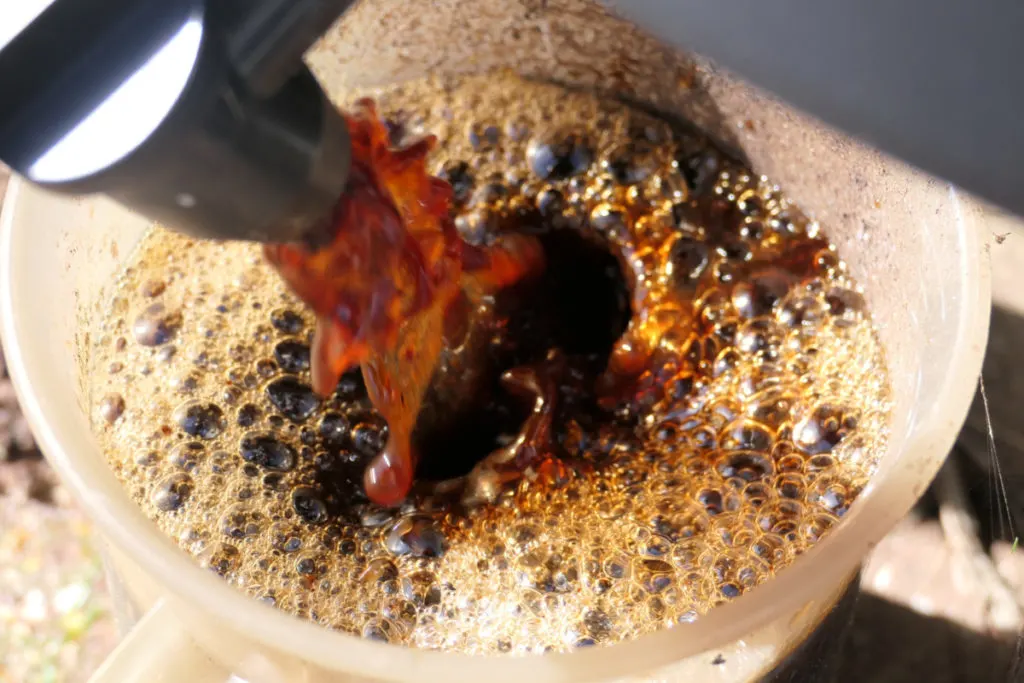
There’s a dynamic community of microorganisms that reside in the soil among the roots of plants. The root microbiome is composed of billions of bacteria and fungi that perform several functions essential to plant life.
These invisible soil-dwellers recycle nutrients in the soil, making them available for uptake by plants. They improve soil structure, suppress weeds and pathogens, and promote healthy growth and yields.
Another wonderful thing they do is enhance the growth of roots by supplying plant growth hormones.
A particularly fantastic source of auxin-producing rhizobacteria is worm castings.
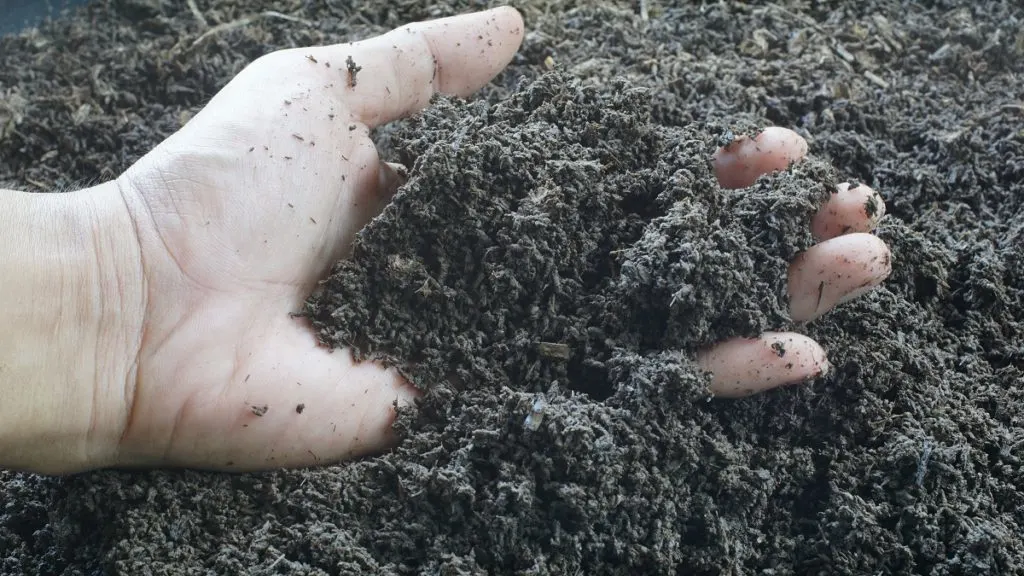
The unique mix of nutrients, organic acids, plant growth regulators, and high microbial activity is what makes vermicompost such a powerful soil amendment.
If you’re new to the world of vermicomposting, read our detailed guide here.
A 2014 study compared traditional compost, vermicompost, and vermicompost tea on the rooting success of grapevines. While all treatments produced rooting, watering the cuttings once a week with vermicompost tea resulted in longer roots.
Pre-treating cuttings in vermicompost tea also had stellar results in another study on cassava plants. Cuttings were that were dipped in a 50% dilution of vermicompost tea before planting had more roots and buds than those treated with 100% vermicompost tea, distilled water, and no treatment.
To make vermicompost tea as a natural rooting hormone, steep 1 liter of vermicompost in 4 liters of water for 24 hours, stirring often. Strain the liquid before applying it to your plant cuttings.
If you want to enjoy all of the benefits of vermicomposting along with a steady supply of vermicompost tea, we highly recommend the Garden Tower growing system. This all-in-one vertical garden is a fantastic organic gardening option for anyone, but especially those who may not have space for a large traditional garden.
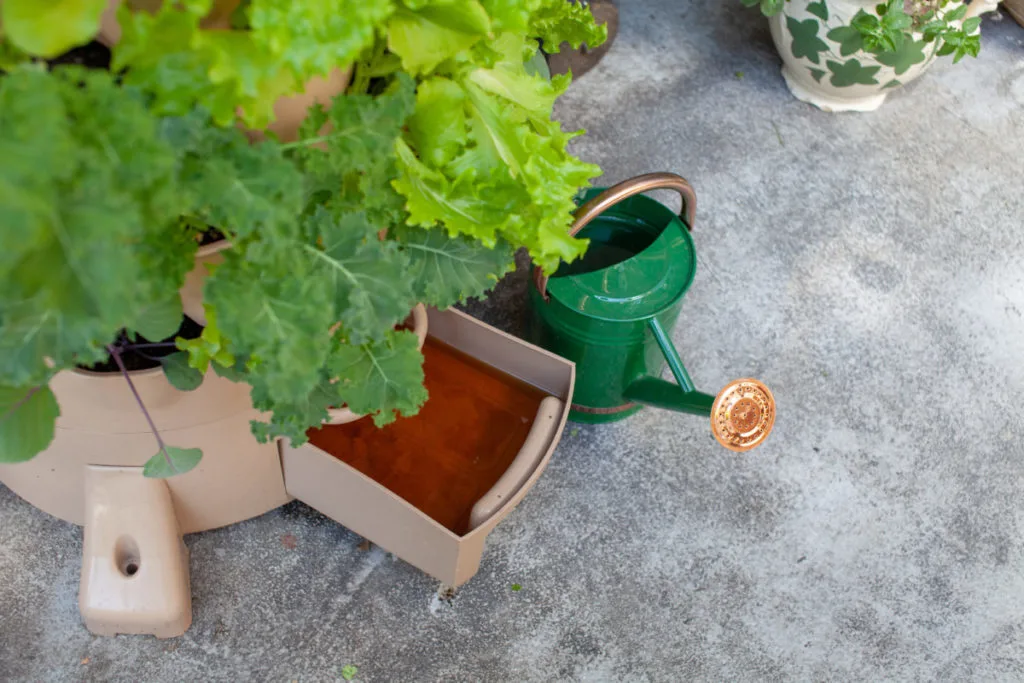
For more information about the Garden Tower check out these articles.
Trying Out the Garden Tower 2 – A Vertical Planter For Growing 50 Plants
A Dirty Update – My Garden Tower 2 Got Worms & Plants!
Garden Tower 2 Update – Gorgeous Lettuce Outgrowing my No-Dig!
With all of these incredibly effective rooting hormones, you may choose to skip the commercially produced rooting hormones altogether.
For an even healthier root system, check out the benefits of inoculating new cuttings and plants with mycorrhizae. Why You Should Add Mycorrhizae To Your Soil – Stronger Roots & Healthier Plants.

Get the famous Rural Sprout newsletter delivered to your inbox.
Including Sunday musings from our editor, Tracey, as well as “What’s Up Wednesday” our roundup of what’s in season and new article updates and alerts.

